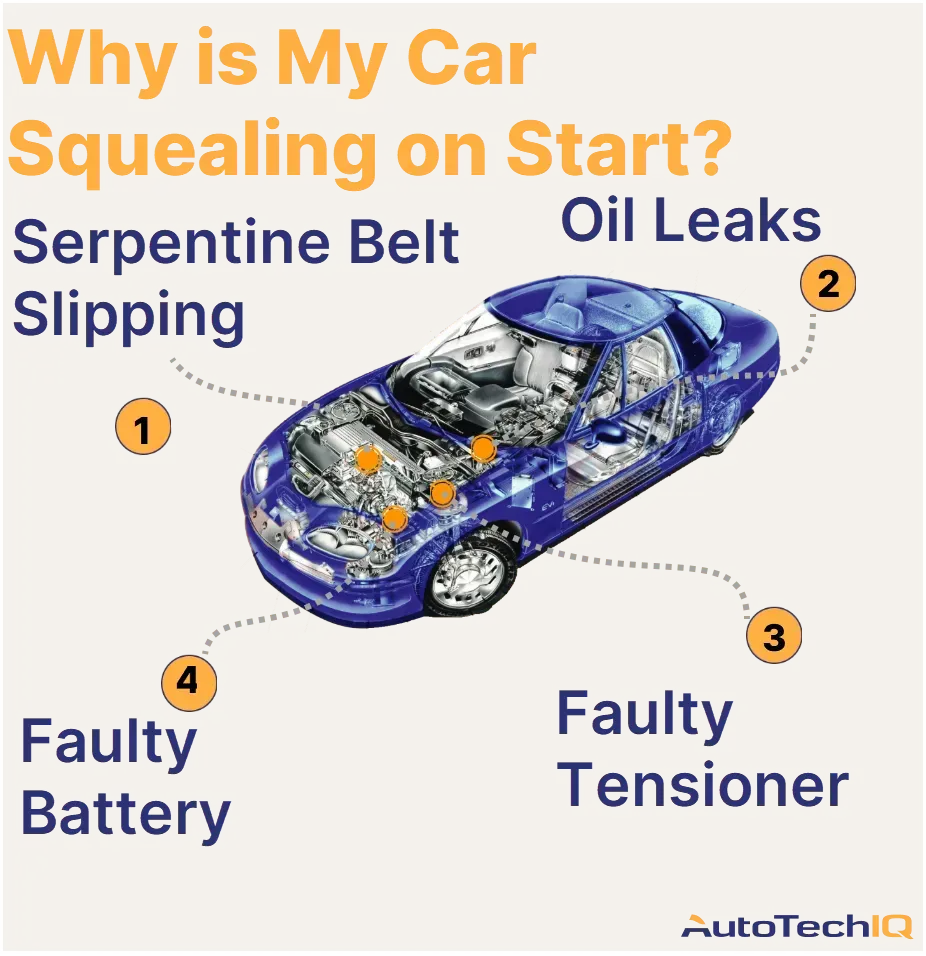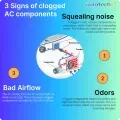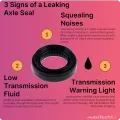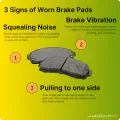
If your car is making a squealing noise when you’re turning it on, the culprit might be a loose serpentine belt. However, if the car is squealing and not starting, it might be due to a battery issue.
The serpentine belt is a rubber belt under your vehicle’s hood that can slip out of place, resulting in it making a squealing noise when trying to spin. A battery squealing noise, on the other hand, is commonly related to low battery or cold weather.
Watch out: The squealing noise can mean serpentine problems, which relate to the electrical system. If these problems progress, they might affect other accessories in your car that need electricity.
A loud squealing noise when starting the vehicle is not a good sign; take the car for an inspection and avoid using it. Here are some of the main risks possibly related to it:
-
Serpentine problems: The serpentine belt could be misaligned or out of place. This means the belt is either loose or banging against other components. Since the serpentine belt powers many of the vehicle’s systems, this could lead to different electrical-related problems. Moreover, a loose serpentine belt can damage nearby components when rotating erratically around an idler pulley, a water pump pulley, a crank pulley, and even the engine itself.
-
Battery issues: The battery might be weak or have corroded terminals. If the battery struggles to start the car, it’ll also lack the power to feed the other accessories of the vehicle. This means your headlights, cabin lights, power steering, etc., might malfunction.
-
Safety risks: The squealing noise, either caused by battery issues or a slipping serpentine belt, presents safety risks. If the serpentine belt is loose under the hood, the vehicle’s engine and nearby components may burn the belt’s rubber and cause a fire hazard. If the issue is with the battery, the car might malfunction and leave you stranded unexpectedly.
The most common causes for a car squealing when starting
Here are the most common issues causing your car to squeal when turning:
Frequently Asked Questions
Q: Why does my car squeal when it’s cold?
When your car squeals in cold weather, it’s often due to the serpentine belt becoming stiff and less flexible in low temperatures, causing it to slip on the pulleys and produce a squealing noise until it warms up. Cold weather can also affect the belt tensioner, making it less effective, and further contributing to the noise. The cold weather also slows down the chemical reactions inside the battery, making it struggle a bit more to start the vehicle and causing a squealing sound.
Q: Should I drive if my car is squealing at startup?
If your car is squealing at startup, it's generally okay to drive short distances, but it's important to get the issue checked out as soon as possible. The squealing is likely caused by a problem with the serpentine belt, tensioner, or a related component, and ignoring it can lead to more serious issues, such as belt failure or damage to other parts like the alternator or water pump.
Q: How long does a serpentine belt last?
A serpentine belt typically lasts between 60,000 to 100,000 miles, depending on the vehicle, driving conditions, and the quality of the belt. However, factors like extreme temperatures, frequent short trips, and exposure to oil or other contaminants can shorten its lifespan.
Typical fixes to address the cause(s)
These are typical processes and repair services that fix a burning rubber issue
-
Serpentine Belt Replacement
-
Tensioner Replacement
-
Car Battery Replacement
-
Pulley Replacement
-
Water Pump Replacement
-
Steering Pump Replacement
The most common cause: Slipping serpentine belt
A failing serpentine belt, also known as a drive belt, is the most common culprit for a car making squealing noises when starting. As a matter of fact, if this belt is misaligned, rigid, or greasy, it’ll cause a squealing noise if the vehicle is turning, driving straight, or anything in between. So, if you think of squealing sounds, turn your eyes to this common suspect.
-
Origin of the sound: Under the hood
-
Symptoms it causes: Apart from the squealing noise you might notice electrical malfunctions related to the radio, cabin lights, headlights, power steering, etc.
-
High risk of priority: The serpentine belt keeps your electrical system working properly. If this belt is faulty, many of your vehicle’s accessories stop working as intended, which can take you by surprise mid-traffic.
What exactly is a serpentine belt?
The serpentine belt is a rubber belt under your vehicle’s hood, next to the engine, that spins and rotates the pulleys of other components like the alternator, air conditioner, etc. This rotation, courtesy of the engine, creates movement, which generates power. So, the serpentine belt, along with the alternator and battery, helps your vehicle’s electrical system.
-
Key function: The key function of the serpentine belt is to drive power to many of your vehicle’s components like the water pump, power steering, air conditioner, etc. The engine triggers the belt to rotate, which then transfers movement and power to these accessories.
Go safe: If the belt is faulty don’t ignore it. A loose belt can’t help your vehicle’s electrical system, leaving extra work for the alternator and battery. This overwork can end up in expensive damages.
What’s a vehicle inspection? It’s “detective work” on your vehicle, checking its systems to find if anything is preventing the car from working as expected. In this case, mechanics examine different parts of your vehicle to track where the squealing noise is coming from and what’s causing it. They’ll also check the condition of components during their inspection, noting which are causing the problem and which got affected by it, recommending to replace them in order of priority.
Transparency example in a serpentine belt service
Let’s see how a vehicle inspection helps the car owner decide what service they’ll proceed with to fix a squealing noise happening during start-up.
In this example, the customer went to an auto repair shop asking for help to deal with a squealing sound issue; the sound was happening when starting the vehicle.
The expert started an investigation by checking under the vehicle’s hood. The serpentine belt was misaligned, which the technician took notice of. Then, when starting the vehicle, it was evident that the serpentine belt was making jerky movements, causing the squealing sounds.
With these findings, the technician will inspect the other accessories that the serpentine belt works with, like the water pump, alternator, etc. If the serpentine belt has been spinning incorrectly for too long, it might have caused damage to nearby pulleys and components. Then, they'll plan a fix for the whole system.
The image below shows the loose and ripped belt that was causing the squealing noise.

In this case, the mechanic put the “Immediate Action” tag on the serpentine belt.
Other news
-
Car is Squealing When Driving

-
What is Preventative Maintenance and What Are The Benefits of it?

-
JobViewIQ - DVI Process Training - Part of the Auto Care Alliance Benefits

-
7 Signs of Clogged AC Components

-
How Much Does a Transmission Fluid Change Cost?

-
7 Signs of a Leaking Axle Seal

-
8 Signs of a Bad Brake Pad
